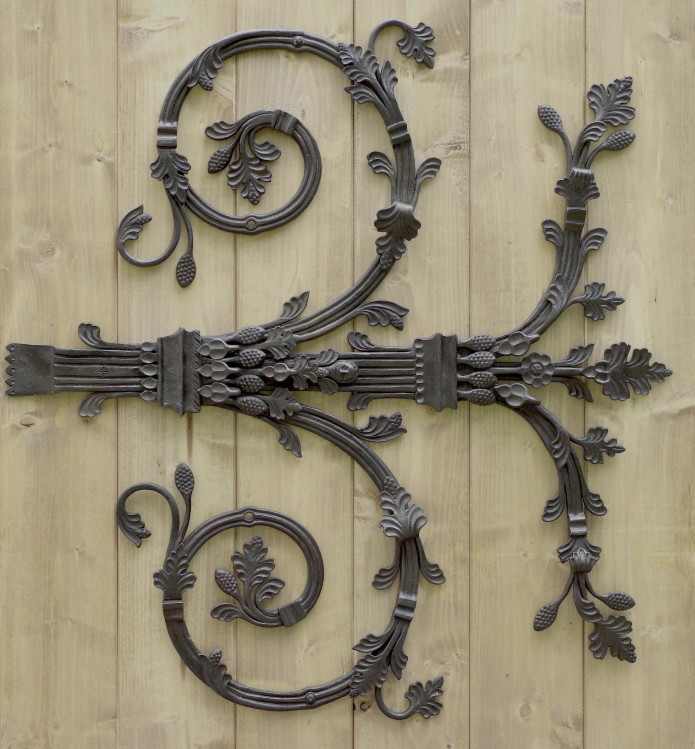Video Download – The Devil’s Blacksmith documentary
19 $
download link
Please support our project with $19 and get a download link to ‘The Devil’s Blacksmith’ documentary.
Walfred Huber, Austrian blacksmith and artist is an avid researcher of the style and technical history of the blacksmith tradition. As many other blacksmiths, he also faced the same agonizing question: how were the hinges of the Notre Dame made? However, after lots of brainstorming, countless hours of trial and error and a lucky visit to a museum it all paid off: he was able to solve the riddle!
At the Musee Cluny he found a piece which was very similar in structure and construction to the hinges of the Notre Dame. When he held it in his hands and examined it from all sides he was finally able to see all the layers. With this knowledge he has been able to devise the sequence of steps that are necesssary to create this masterpiece.
This is what we will be presenting to you.
Thank you for your contribution!
We truly appreciate the support of several blacksmith associations, blacksmith colleagues and non-blacksmith friends worldwide. We’re really honoured.
Education Center of Austrian Federal Office for Monuments Care, Mauerbach
Black Bear Forge – John Switzer
![]()
Artistic Anvil – Travis C. Fleming
Artist Blacksmith’s Association of Finland

Jim and Nicholas Archambault – Elite Custom Ironworks

Eric O’Neill – Killuragh Kraftworks

Russel Jones – Santa Cruz Gates

The Devil’s Blacksmith documentary


The Notre-Dame Cathedral in Paris is one of the most remarkable masterpieces in the history of architecture. The portals of the main facade boast decorative wrought-iron hinges that represent extraordinary value in the world of art and in the blacksmith trade alike. These wonderfully crafted hinges were made at the end of the twelfth century, and their high artistic quality showcase a true master.

The blacksmith, who forged them, was called “Bicornett” (Two-Horned) by his contemporaries because the popular belief was that such things could only be created with the help of the Devil himself. Legend has it that Master Bicornett could finish the work on the side portals, but the one facing the altar in the central nave was never to be set up due to the Devil’s evil intentions.
The truth is that the portal disappeared during the French Revolution, and it was only replaced in the 1860’s thanks to the restoration works led by Viollet-le-Duc. They were fortunate enough to find an excellent blacksmith, Pierre Boulanger, who was not only able to recreate the hinges on par with the originals, but also improved the design with his precision and attention to detail.

Since that time this knowledge has seemed to be lost forever and a great number of craftsmen have tried to get around the problem without success.
These hinges form a very complex pattern by plastically combining nature-inspired decorative elements such as leaves, flowers and animal heads. In addition, there are cover plates and bands applied to the crossing branches that need to be placed properly, which even skillful craftsmen find completely impossible. What seemed impossible to solve was how all these intricate pieces – which were all different in size and weight – could be set together with forge welding in such a way that they would not be damaged but would make one solid structure.
In forge welding the pieces of metal are heated to almost their melting point, then fitted and hammered together. This takes great practice and attention even in simpler structures. However, we’d have thought it to be impossible in a piece as complex and intricate as the hinges of the portal of the Notre-Dame. In today’s world, where forge welding has almost entirely been rendered obsolete by modern welding technology, it seemed impossible to crack the mystery of how the hinges of the Notre Dame were made. But there is someone who achieved the impossible.

Walfrid Huber, Austrian blacksmith and artist is an avid researcher of the style and technical history of the blacksmith tradition. As many other blacksmiths, he also faced the same agonizing question: how were the hinges of the Notre Dame made? However, after lots of brainstorming, countless hours of trial and error and a lucky visit to a museum it all paid off: he was able to solve the riddle!
At the Musée Cluny he found a piece, which was very similar in structure and construction to the hinges of the Notre Dame. When he held it in his hands and examined it from all sides he was finally able to see all the layers. With this knowledge he has been able to devise the sequence of steps that are necessary to create this masterpiece.

The Devil’s Blacksmith documentary Indiegogo campaign (closed)
Article in german at dorfschmied.wordpress.com
